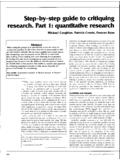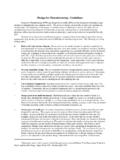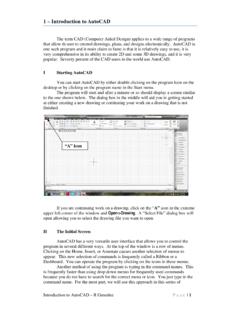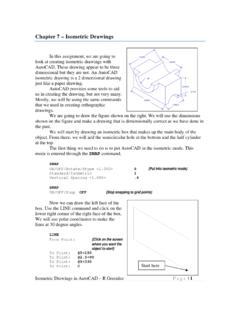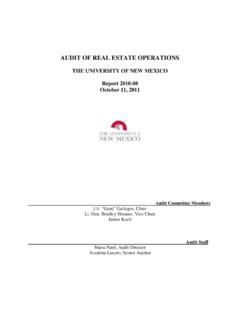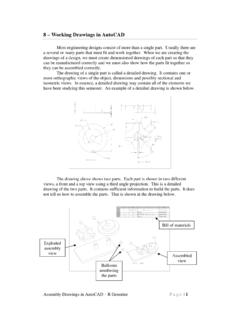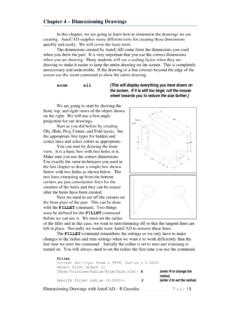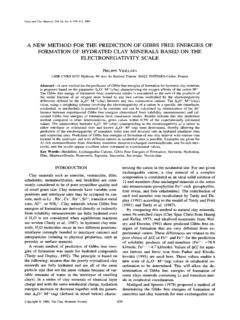Transcription of PREDICTION OF ONE REPETITION MAXIMUM STRENGTH …
1 584 Journal of STRENGTH and Conditioning Research, 2006, 20(3), 584 592 2006 National STRENGTH & Conditioning AssociationPREDICTION OFONEREPETITIONMAXIMUMSTRENGTHFROMMULTIP LEREPETITIONMAXIMUMTESTING ANDANTHROPOMETRYJEFFM. REYNOLDS,TORYANNOJ. GORDON,ANDROBERTA. ROBERGSE xercise Physiology Laboratories, Exercise Science Program, university of New mexico , Albuquerque, New , , Gordon, and Robergs. Pre-diction of 1 REPETITION MAXIMUM STRENGTH from multiple repeti-tion MAXIMUM testing and STRENGTH 20(3):584 592. 2006. The purpose of this study was toquantify the decrease in the load lifted from 1 to 5, 10, and 20repetitions to failure for the flat barbell bench press (chest press;CP) and plate-loaded leg press (LP). Furthermore, we developedprediction equations for 1 REPETITION MAXIMUM (RM) strengthfrom the multiple RM tests, including anthropometric data, gen-der, age, and resistance training volume.
2 Seventy subjects (34men, 36 women), 18 69 years of age, completed 1, 5, 10, and20RM testing for each of the CPs and LPs. Regression analysesof mean data revealed a nonlinear decrease in load with increas-ing REPETITION number (CP: linear kg, nonlinear kg; LP: linear kg, nonlinear kg, respec-tively). multiple regression analyses revealed that the 5RM dataproduced the greatest PREDICTION accuracy, withR2data for 5,10, and 20RM conditions being LP: , , ; , , and , respectively. The regression predictionequations for 1RM STRENGTH from 5RM data were LP: 1RM (5RM weight [kg]) , kg,R2 ; CP: 1RM (5RM weight) , ,R2 Dynamic muscular STRENGTH (1RM) can be ac-curately estimated from multiple REPETITION testing.
3 Data revealthat no more than 10 repetitions should be used in linear equa-tions to estimate 1RM for the LP and CP chest press, leg press, regression, fatigue, trainingINTRODUCTIONThe use of 1 REPETITION MAXIMUM (RM) testingin resistance training has been applied to quan-tify STRENGTH in order to prescribe training pro-grams by health and fitness professionals, ath-letic trainers, rehabilitation specialists, and strengthcoaches. Research on 1RM testing began over 50 yearsago (9), and the use of 1RM testing has become a reliablemethod of STRENGTH assessment in trained and untrainedsubjects (1, 4 6, 8, 17 23). However, for some popula-tions, age and preexisting medical conditions may be con-traindications to the safe completion of 1RM have identified the difficulty in complet-ing 1RM testing on certain populations, and several 1 RMstrength PREDICTION equations have been developed.
4 How-ever, some of these equations are only for specific exer-cises, such as the leg extension (1) or bench press (1, 4 9, 11, 15, 18 21, 23 26, 30), while others are only for cer-tain populations, such as college-aged men (8, 21, 22, 24,30). These equations are all based on having subjects liftthe greatest load possible for a predetermined number ofrepetitions (such as in RM testing), a given load for asmany repetitions as possible in a predetermined timeframe, or with loads inducing fatigue within a specificrange of repetitions. The range of repetitions used in suchtesting has been between 2 (6, 7) and 15 (21), with linearequations apparent for repetitions less than 10 and non-linear equations available for REPETITION numbers up to15 (19, 21).
5 Mayhew et al. (21) developed their nonlinear equationusing data from multiple subjects who lifted a fixedweight repeatedly, recording as many correct repetitionsof the bench press as possible in 1 minute, with a load of55 95% (selected randomly by computer) of 1RM for eachsubject. The range of repetitions was based on the be-tween-subject variability and the randomly assigned per-centage of 1RM. Conversely, Lombardi (19) proposed anonlinear equation in his textbook but provided no data,or evidence of data, from which this equation was devel-oped. Consequently, there is no experimental evidence fora nonlinear relationship between the decrease in load lift-ed and REPETITION number for any given addition to REPETITION number, other factors mayaffect the MAXIMUM amount of weight an individual canlift.
6 Age, sex, ethnicity, limb lengths and circumferences,body mass, muscle mass, training routine and status, therate of contractions, and the time distribution betweenconcentric, eccentric, and recovery phases of a contractioncycle could all possibly influence the load able to be liftedfor a specific number of the limited research of 1RM STRENGTH predictionfor a variety of weight lifting exercises, and the absenceof guidelines for using linear vs. nonlinear equations for1RM STRENGTH PREDICTION , additional research of 1RM pre-diction is needed. Furthermore, because of the limitednumber of independent variables used in past regressionequations, it is possible that additional variables couldimprove the accuracy of 1RM STRENGTH purpose of this study was to (a) examine the re-lationship of decreases in the load lifted and increases inrepetitions to failure, (b) determine if there are genderdifferences in the decrease in loads lifted from 1, 5, 10,and 20RM testing, (c) assess which of the loads lifted dur-ing 5, 10, and 20RM testing most accurately predicts 1 RMstrength, and (d) identify if the addition of anthropome-try, gender, age, and training history data increases theaccuracy of 1RM STRENGTH PREDICTION in a large, chose to study the leg press (LP) and chest press(CP)
7 Actions, as these have been included in past researchand are common actions included in most resistancetraining OFONEREPETITIONMAXIMUMSTRENGTH585 METHODSE xperimental Approach to the ProblemOur stated purpose and hypotheses required multipletypes of research design, consisting of analysis of variance(ANOVA) (influence of repetitions to failure [1, 5, 10, 20]on the loads lifted and differences in loads lifted betweenmen and women) and multiple regression ( PREDICTION of1RM STRENGTH from multiple RM testing and anthropom-etry, gender, age, and training history).SubjectsSeventy subjects (34 men and 36 women; 18 69 years ofage) of varied resistance training experience were recruit-ed from the university campus and from the surroundingcommunity. Subjects were recruited using a conveniencesampling technique.
8 Prior to the start of the study, sub-jects completed a health history and resistance and aer-obic training questionnaire. In addition, seated restingblood pressure was measured on the nondominant armusing manual were excluded based upon known disease orsigns or symptoms of health-related problems that wouldinterfere with their ability to complete the protocol orcompromise their health, as recommended and detailedby the American College of Sports Medicine (2). For ex-ample, if a subject had more than one positive risk factorother than age (men 45, women 55 years; family his-tory, cigarette smoking, hypertension, hypercholesterol-emia, impaired fasting glucose, obesity, and sedentarylifestyle), the subject was excluded from participation inthe research protocol was approved by the UniversityInstitutional Review Board.
9 All details of the study wereexplained to each subject on an individual basis prior toreading of the informed consent and subsequent signingto confirm participation in the study. All exercise testingsessions were completed at the university recreationalweight room or a community-based health club, both lo-cated at an altitude approximating 1,572 m (PB 635 mmHg) and having identical equipment to that used in successful screening for inclusion and exclusion cri-teria and signing of the consent forms, subjects arrivedfor their next appointment at the university weight roomor health club. Subjects were informed of the need to nottrain the muscles (or antagonists) to be assigned testingon a given day for at least 48 hours prior to the scheduledsession. Height was measured while the subject was inmid-inspiration and barefoot.
10 Body weight was measuredto the nearest kg on a precalibrated digital scale (SecaCorporation, Columbia, MD), and subjects were preparedfor anthropometric and skinfold measurements. Subjectshad the girth of their chest, upper arm, and upper thighmeasured. Finally, subjects had 3 skinfold sites measured(chest, abdominal, and thigh for male; triceps, suprailiac,and thigh for women) to predict body density (17). Bodydensity was converted into a population-specific equation(14) to estimate percentage body fat based on a 2-com-ponent model, from which data for fat-free mass (FFM)was standard 22-kg (45-lb) barbell and a nonadjustableCybex weight bench (Cybex International, Inc., Medway,MA) were used for the bench press exercise (chest press,CP). A nonadjustable Cybex plate-loaded squat press (wewill refer to this as the plate-loaded leg press) was usedfor the LP exercise.


